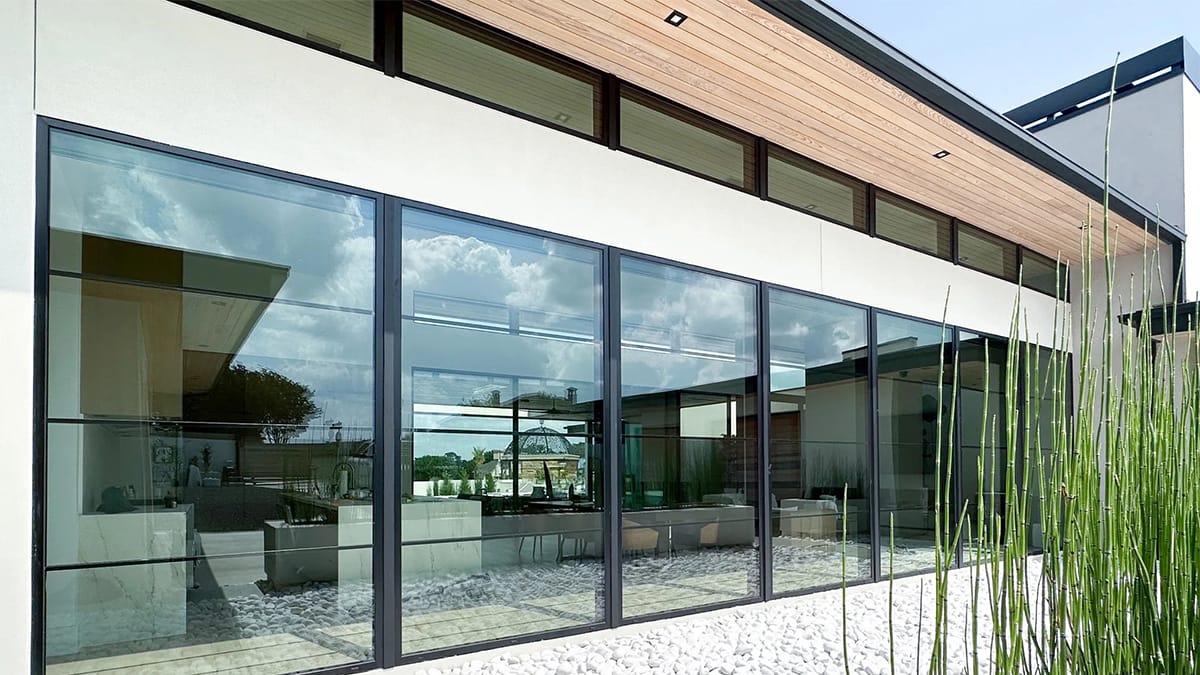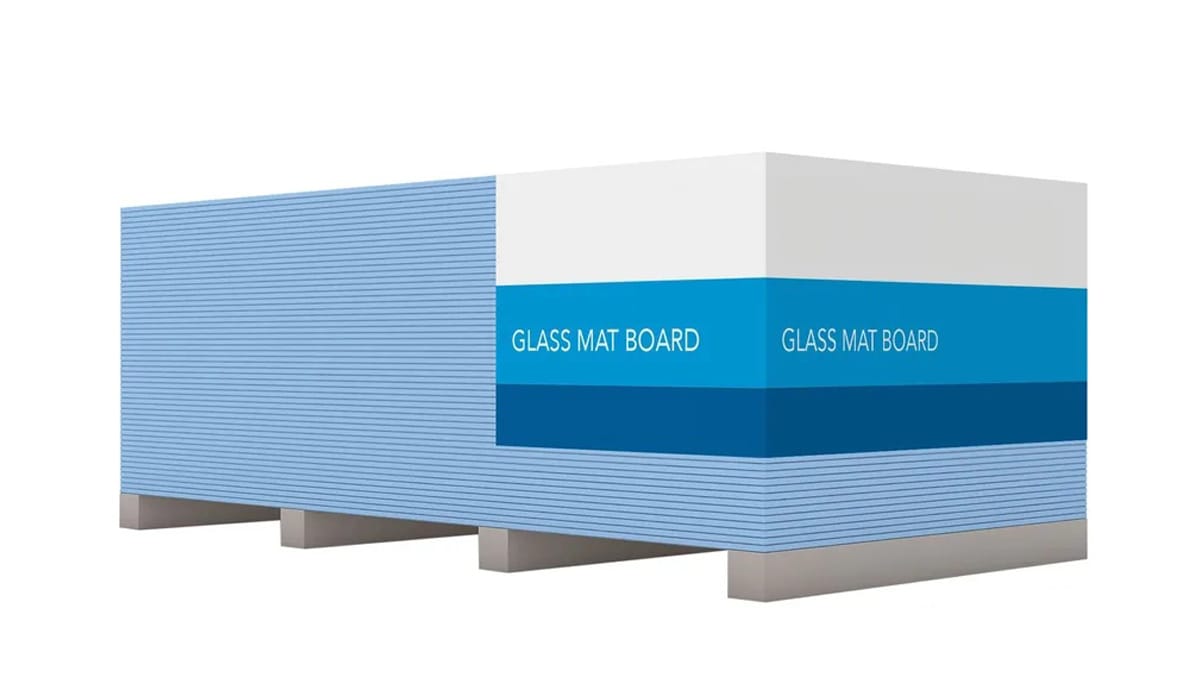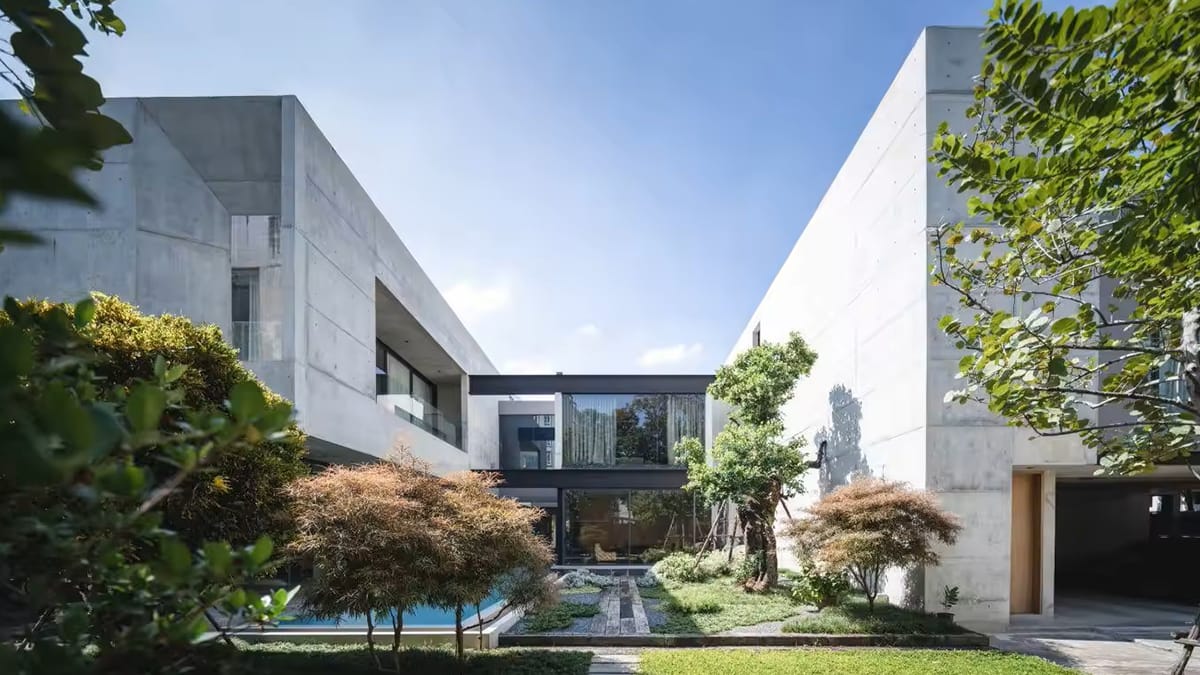
02 Nov Top Alternatives to Fiber Cement Board for Exterior Walls
Table of Contents
You have many options for cladding your house. If you do not want fiber cement board for exterior wall applications, you can try foam board, glass mat gypsum board, magnesium oxide board, composite siding, or PVC panels. Each choice has something good about it. Some keep out water better. Others cost less or are easier to take care of. The right cladding can make your house look nicer. It can also protect against water damage and work well in your weather.
Key Takeaways
Look at different cladding choices like foam board, magnesium oxide board, and PVC panels to see what works best for your house. – Pick materials that keep out water and mold to help your home in rainy places. – Think about easy-care options like PVC panels and composite siding to save time and work. – Check how much the materials cost now and how much you can save later with less upkeep to pick something good for your budget. – Choose cladding that looks good with your house and is also strong and can handle bad weather.
Fiber Cement Board Alternatives
You have many choices for cladding your home today. If you do not want fiber cement board for your exterior walls, you can look at other options. These choices let you pick the style, cost, and performance you want. Many people want siding that keeps out water, is easy to put up, or is better for the environment. Here are some top cladding options you can use instead of fiber cement siding.
Tip: The right cladding makes your house look better and keeps it safe from bad weather.
Here is a quick list of popular fiber cement siding alternatives and what they do best:
Material | Advantages |
|---|---|
Foam Boards | Light, simple to install, keeps out water |
Magnesium Oxide Boards | Fire safe, strong, eco-friendly |
Glass Mat Gypsum Boards | Keeps out water, good for outside use |
You can also look at wood siding, metal siding, plywood, DensShield, natural wood panels, exterior composite wood slat panels, and smartside products as wood cladding choices. Each of these panels gives something special to your home’s outside.
Foam Board
Foam board is a very popular fiber cement board alternative. It is light and easy to cut and put up. Foam board keeps out water, so you do not need to worry about water damage. These panels do not soak up water, so they work well in rainy or wet places. Foam board also helps keep your house warm or cool, which can save you money on energy bills.
Foam board keeps out water and does not soak it up, so it is great for wet places.
It helps keep your house warm or cool, so you spend less on energy.
Cement backer board also keeps out water but can soak some up over time, which can cause mold or damage.
Foam board does not have this problem, so it lasts longer in wet places.
Rigid polyurethane foam used for outside walls can last over 30 years if you take care of it and use it right. Foam board panels are a smartside choice if you want cladding that is easy to care for and saves energy. You can use foam board under other siding or as the main finish.
Glass Mat Gypsum Board
 Glass mat gypsum board is another good fiber cement board siding alternative. These panels keep out water and mold, so they are good for wet places. Glass mat gypsum board is light, so you can put it up fast. These panels work for new homes or when you fix up old ones.
Glass mat gypsum board is another good fiber cement board siding alternative. These panels keep out water and mold, so they are good for wet places. Glass mat gypsum board is light, so you can put it up fast. These panels work for new homes or when you fix up old ones.
Material | Durability | Moisture Resistance | Installation Difficulty | Aesthetics | Cost |
|---|---|---|---|---|---|
Fiber Cement Board | Very High | Excellent | Hard | Plain, paintable | High |
Very High | Excellent | Hard | Plain, paintable | High |
Glass mat gypsum board also helps protect against fire, but fiber cement board is still very tough and works well in hard weather. Glass mat gypsum panels are easy to move and you can paint them any color. If you want siding that goes up fast and keeps out water, this is a great choice.
Magnesium Oxide Board
Magnesium oxide board, or MgO board, is becoming more popular as an eco-friendly cladding. These panels are strong, light, and easy to put up. MgO board is very safe from fire and gives good support, so it is a safe pick for your house. These panels also keep out water, so you do not need to worry about rot or mold.
Characteristic | Description |
|---|---|
Durability | MgO boards make a strong base for render and give great support. |
Weather Resistance | They keep out water and do not break down in bad weather. |
Fire Resistance | Class A fire-rated boards make your house safer. |
Eco-Friendly | They are good for the planet and have no toxic stuff. |
Low Maintenance | You do not need to do much to keep them nice. |
Improved Energy Efficiency | They often work with insulation to keep your house warm or cool. |
MgO board is lighter than cement backer board, so it is easier to use and helps in earthquakes. It is made from natural things, so it is safe and eco-friendly. MgO board panels also help keep your house warm and block noise. They cost more at first than fiber cement board, but you save money later because you do not need to fix them much. If you want cladding that lasts and is good for the planet, magnesium oxide board is a smartside choice.
Composite Siding
Composite siding is a very flexible fiber cement siding alternative. These panels are made from wood fibers and resins, so they look like wood but are stronger. Composite siding does not soak up water, so you do not get swelling, cracks, or rot. These panels are light, so you can put them up fast and easy.
Composite siding looks like wood but lasts longer.
You get the nice look of wood without lots of work.
Composite siding keeps out bugs and water, so it works in many places.
Smartside composite siding comes in many colors and styles, so you can match your house.
Composite siding, like Everlast, is made to stand up to bad weather. It keeps out water, rot, and bugs better than fiber cement board. You do not need to worry about cracks or sealing as much as with regular fiber cement siding. Composite siding panels are a good pick if you want wood’s look but less work and more strength.
PVC Panels
PVC panels are another new choice for outside cladding. These panels are light, easy to put up, and keep out water. PVC cladding helps keep your house quiet and comfortable. These panels come in many designs, textures, and colors, so you have lots of smartside choices.
Feature | Traditional Wall Materials | |
|---|---|---|
Insulation | Good at keeping heat and sound in without extra layers | May need more insulation layers |
Weight | Light, so your house does not need to be as strong | Heavy, needs stronger support |
Installation Time | Goes up fast because it is made ahead of time | Takes longer to build |
Customization and Design | Many designs, textures, and colors to pick from | Not as many choices, may need extra work |
Moisture Resistance | Keeps out water, so less damage from rain | Can have problems like rot or mold |
Maintenance | Needs little care because it is strong | May need painting or repairs |
Environmental Impact | Better for the planet because it uses recycled stuff | Not as good for the planet, uses more resources |
PVC panels are easy to care for, so you save time and money. Many are made from recycled materials, so they are better for the planet. If you want cladding that is easy to care for, eco-friendly, and looks good, PVC panels are a smartside pick.
Note: When you pick from these fiber cement board alternatives, you can find the best one for your weather, style, and budget. Each cladding choice has its own good points, like keeping out water, being eco-friendly, or looking classic. Check out all the siding alternatives and smartside panels to make your house look the way you want.
Cement Board Alternatives
 When you look for cement board alternatives, you want panels that last. You also want them to look nice and not cost too much. Let’s look at the best choices so you can pick what works for your house.
When you look for cement board alternatives, you want panels that last. You also want them to look nice and not cost too much. Let’s look at the best choices so you can pick what works for your house.
Durability
You want panels that stay strong for a long time. Fiber cement siding and other panels like magnesium oxide and glass mat gypsum are tough. These panels do not crack or rot. They also stop mold from growing. Foam board is lighter but still works well. Wood siding looks good but needs more care to stay strong. Composite and PVC panels are also strong and can be used in many ways.
Maintenance
Most people want panels that are easy to care for. Fiber cement board only needs cleaning and painting every 10-15 years. Foam board and PVC panels need even less work. Wood siding needs more care, like sealing and painting, to stop rot and mold. Composite and glass mat gypsum panels do not need much work to keep them nice.
Cost
How much you spend is important. Here is a quick look at what some panels cost:
Material | |
|---|---|
Engineered Wood Siding | $5.00 – $9.00 |
Insulated Vinyl Siding | $4.00 – $12.00 |
Foam board and composite panels do not cost a lot. Fiber cement siding and magnesium oxide panels cost more at first. But you save money later because you do not need to fix them as much.
Appearance
How your house looks matters. Fiber cement siding can look like wood or stone. This makes your house look better. Wood siding gives a classic look but needs more care. Composite and PVC panels come in many colors and textures. You have lots of choices for how your house looks.
Climate Suitability
You need panels that work in your weather. Fiber cement board and panels like magnesium oxide are good for wet or cold places. These panels do not crack in freezing weather and keep out water. Foam board and glass mat gypsum panels also work well in wet places. Wood siding is not the best for very wet or humid places unless you want to do more work.
Tip: Pick panels that work for your weather and help the planet. Many cement board alternatives use recycled materials and are better for the earth.
When you look at your choices, think about how well they keep out water, how long they last, how much they cost, and how they look. The right panels keep your house safe, looking good, and easy to care for.
Choosing the Right Alternative
When you pick cladding, you want panels that fit your needs. Every house is different, so you should think about your weather, style, and money. Here are some tips to help you pick the best panels instead of fiber cement board for outside walls.
For Wet Climates
If you live where it rains a lot, you need panels that block water. Pick panels that do not let water in. Some good choices are aluminum, engineered cladding, and rain screen systems. These panels let water drain out and keep your walls dry.
Material Type | Performance in Wet Climates |
|---|---|
Aluminum | Resistant to corrosion and weathering |
Engineered Cladding | Provides durability and weather resistance |
Rain Screen Systems | Allows for drainage and prevents water damage |
Tip: Good cladding in wet places should work like a rain screen. This helps water drain out and stops damage to your walls.
For Low Maintenance
You may want panels that do not need much work. Low-maintenance siding saves you time and money. Some good choices are Duration Crown Molding, Canvas Series Beadboard, Everlast Lap Siding, and Cedar Impressions Sawmill Shingles. These panels do not fade or get damaged by water or weather. Hardie Artisan Siding Shiplap also gives a classic look with less work. You can enjoy your house without fixing it all the time.
Duration Crown Molding: Handles water and temperature changes.
Canvas Series Beadboard: Looks like wood but needs little care.
Everlast Lap Siding: No caulk or primer needed, comes with a warranty.
Cedar Impressions Sawmill Shingles: Looks like real wood, but you do not have to paint or stain.
For Budget-Friendly Projects
If you want to save money, you still have many good choices. Vinyl siding is one of the cheapest panels. Wood paneling looks nice and costs less than many other panels. Brick veneer looks like real brick but is cheaper. Composite wood panels last longer and need less care, so you save money.
Vinyl siding: Low cost and easy to clean.
Wood paneling: Classic look, budget-friendly.
Brick veneer: Cheaper than full brick walls.
Composite wood panels: Less rot and fewer bugs than regular wood siding.
You can sometimes find deals on aluminum or wood scraps in your area, which helps you save even more.
For Classic Appearance
Do you want your house to look classic? Some panels give you that timeless style. Brick, marble, and granite all look traditional. Brick feels warm and natural. Marble looks fancy, and granite looks shiny and strong.
Material | Appearance/Features | Durability | Maintenance | Best Use Cases | Price Range |
|---|---|---|---|---|---|
Brick | Natural, warm, eco-friendly look | Medium | High | Resorts, cottages, eco-homes, urban facades | USD 2.84 – 6.81 per sq. ft. |
Marble | Elegant veining | Moderate | High | Hotels, boutique buildings, luxury residences | USD 0.42 – 2.40 per sq. ft. |
Granite | Polished, dignified | High | Moderate | Government buildings, five-star hotels | N/A |
Remember: When you pick cladding, think about what it is made of, how strong it is, how to put it up, safety, and your weather. The right panels keep your house safe and make it look nice.
You can pick from many panels for your house. Each kind has something good about it. Some work better in cold or wet places. Others help you save money or need less work. Here is a simple guide:
Climate Type | Best Panels for Exterior Cladding |
|---|---|
Insulated vinyl, fiber cement board, brick | |
Storm-Prone | Fiber cement board, metal siding, reinforced vinyl |
If you want panels that last a long time, fiber cement board is a top choice. For panels that are easy to care for, try PVC panels or composite cladding. Always talk to a specification consultant or technical services team before picking panels.
You can ask project coordinators for help with putting up panels.
Skilled workers make sure your panels are installed safely.
FAQ
What is the easiest alternative to install?
Foam board and PVC panels go up fast. You can cut them with basic tools. These panels are light, so you do not need special equipment. Many homeowners like these options for quick projects.
Which option lasts the longest outside?
Magnesium oxide board and composite siding both last a long time. You get strong panels that resist rot, bugs, and water. If you want less worry about repairs, these choices work well.
Are any of these alternatives eco-friendly?
Many magnesium oxide boards and some composite sidings use recycled materials. You help the planet when you pick these. Look for products with green certifications if you want the best eco-friendly option.
How do costs compare to fiber cement board?
Foam board and vinyl siding usually cost less.
Magnesium oxide and composite siding cost more at first.
You save money later because you do not need to fix them as much.
Can I paint or customize these panels?
Yes! You can paint glass mat gypsum, magnesium oxide, and composite siding. PVC panels come in many colors and textures. You get lots of ways to match your style.
